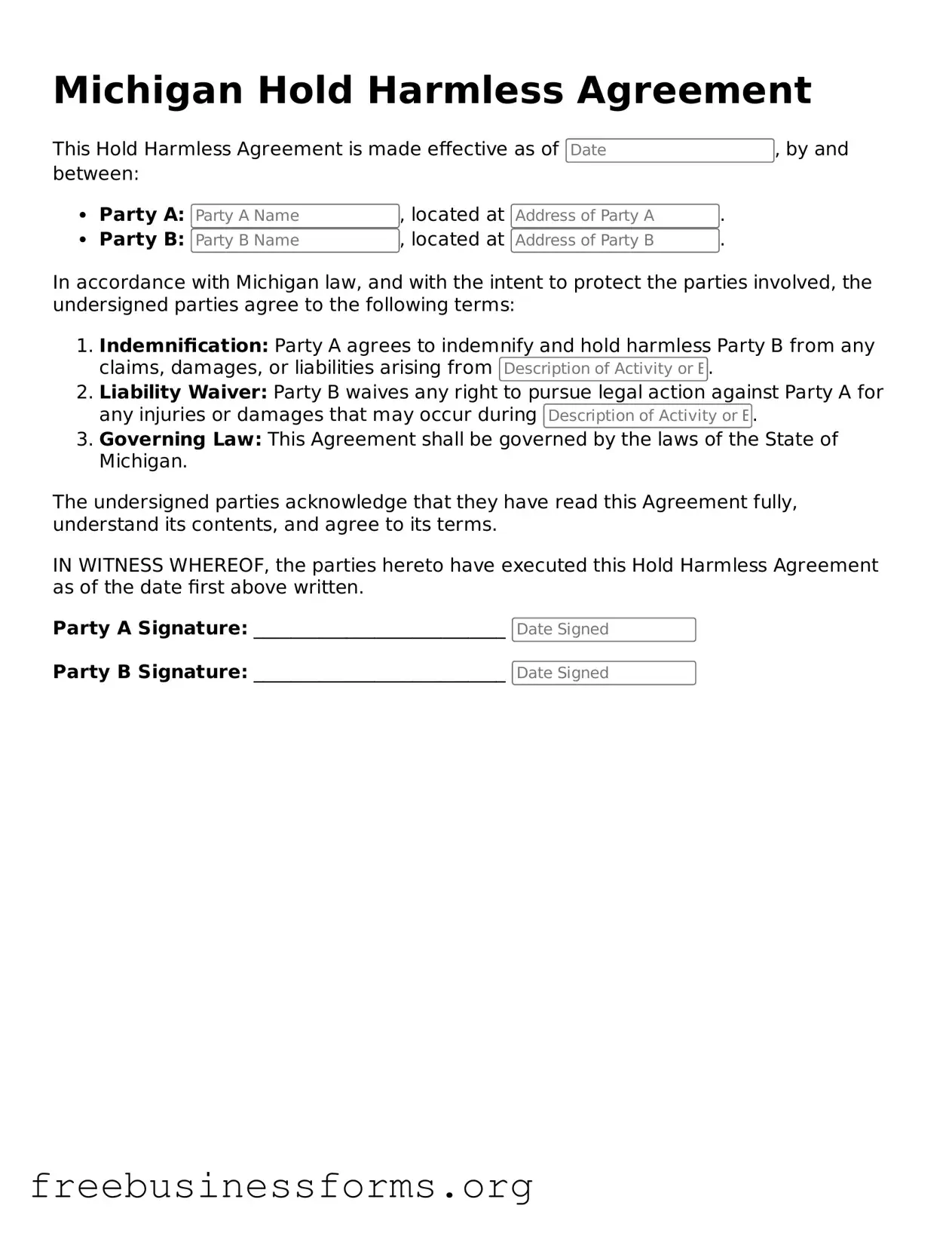Blank Hold Harmless Agreement Template for Michigan
The Michigan Hold Harmless Agreement is a legal document designed to protect one party from liability for any damages or injuries that may occur during a specified activity or event. This form is commonly used in various situations, such as rental agreements, events, and construction projects, where one party agrees to assume the risks associated with the activity. Understanding the implications of this agreement is crucial for both parties involved to ensure clarity and protection.
Open Form Here
